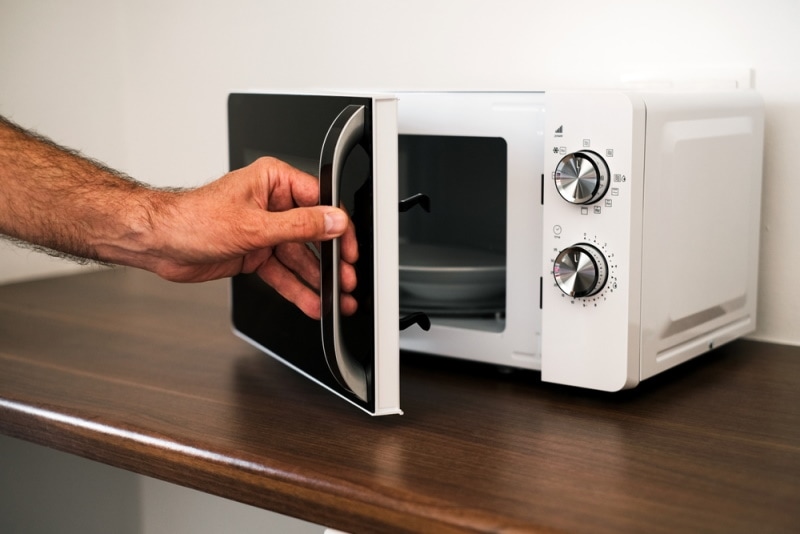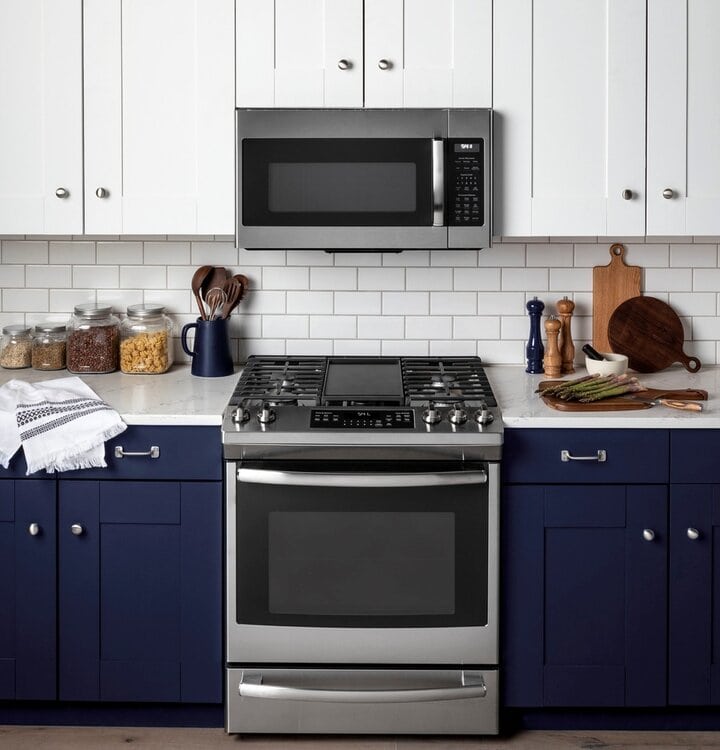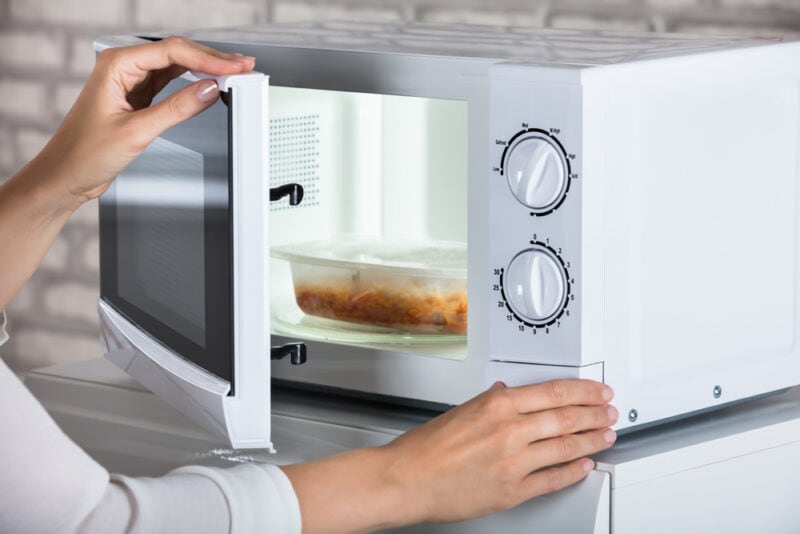What Size of Microwave Do I Need? Everything You Need to Know!
-
- Last updated:

No matter how much room you have on your countertop, you can’t overstate the value of choosing the best microwave to suit your space and your needs. Every inch of countertop that a microwave fills is one less inch you have to use for food prep and other items. While you don’t want an undersized microwave that can’t handle your meals, you shouldn’t sacrifice valuable space with a needlessly large appliance.
Microwaves come with countless features and specs to consider, making it easy to miss critical details. But although you may be able to live with some undesirable aspects, a poor size fit will never suffice. Get the perfect product the first time by following these tips on getting the ideal microwave size for your kitchen.
Click below to jump ahead:

What Size Countertop Microwave Do I Need?
The primary considerations when sizing a microwave are the external dimensions and the interior cooking space. If you decide on a countertop microwave, you’ll have several sizes available, making the decision more challenging.
A countertop microwave is an excellent solution for renters who can’t install a new appliance and homeowners who don’t want to deal with the hassle of a complicated setup. They’re less expensive and easy to maneuver if you move or rearrange the kitchen. With a trim kit, you can even give a countertop microwave a built-in appearance, providing a sleek installed look without any hardwiring.

Measure the Space
Countertop microwaves vary in width (15”–25”), depth (12”–20”), and height (10”–15”). Depending on the design, the door swing can also range significantly, with open-door microwave depths often running between 27 and 39 inches.
Find the ideal countertop microwave dimensions for your area by removing your current microwave and any other items from where you want to put your new one. Measure the space for the new microwave with the following minimum clearances in mind to prevent over-estimating the appropriate size:
- 24 inches between the range and the microwave
- 3 inches between the counter’s edge and the front of the microwave
- 1 inch between the wall and microwave (allows for venting)
Consider the height of your microwave. While there aren’t any firm rules surrounding the clearance, it should be a few inches from the bottom of any overhanging cabinets. You may also consider new storage opportunities by getting a shorter microwave. For instance, you may create enough space for under-cabinet storage by downsizing a few inches from top to bottom. Don’t plan to remove the microwave’s feet, as that can limit circulation, or store items, like cookbooks or dishes, on top of the unit.

Interior Capacity
After determining your maximum dimensions, deciding the optimal interior space will ensure you get the best function for your household. Countertop microwaves range from 0.5 cubic feet to 2.2 cubic feet.
Compact sizes work well for plates about 10 inches in diameter or smaller. It’s an ideal size for college dorms or anyone who only uses the microwave to heat drinks or quick snacks. Larger families typically need a larger and more powerful microwave for optimal convenience. You may even consider getting dual units, with a countertop unit to complement an over-the-range (OTR) or built-in model.
What Size Over-the-Range Microwave Do I Need?
Over-the-range microwaves have fewer available sizes due to their limited placement in the kitchen. They are 30 inches wide to match the range underneath and typically measure 17 inches tall. Depth ranges from 15 to 18 inches. Compact, low-profile models only 10 inches high accommodate low-hanging cabinets. Meanwhile, narrow 24-inch models fit cleanly over smaller apartment-sized ranges.
OTRs can be as small as 0.8 cubic feet or as large as 2.1 cubic feet. Apart from capacity, two design features come into play when looking at your current setup: the door swing and the clearance from the range.

Clearance
The microwave height will determine your clearance from the cooktop, a key safety and functional concern. Some building codes need clearances of only about 14 inches, which many find too close for comfort, especially with gas stovetop elements. Convenience and safety often demand a distance of 18–24 inches between the microwave bottom and cooktop.
Local laws may detail the required clearance for microwaves above cooktops. Different OTR models will also offer more flexibility. Check your municipal codes and the product install guide to narrow down OTR options that could suit your space.
Door Swing
Being 30 inches wide, OTRs have less variation in their door swing depth than countertop microwaves. Traditionally, they had a control panel on the side of the door, making the door a few inches narrower than the width of the microwave. But now, many OTRs, including several LG and Samsung models, have doors spanning the entire width. The controls integrate into the door rather than a separate panel, creating a clean modern aesthetic.
The door swing won’t affect the space in which you can place your OTR, but it could make a difference when you have to open the microwave. A wider door means a wider swing, and many consumers feel they have to lean out of the way to let it open. Everyday convenience might take a hit. As you measure your space accounting for the door swing, those extra inches may get in the way of other doors in the kitchen. You don’t want a microwave door butting into an open cabinet or refrigerator.


Conclusion
With exciting new technology like convection and air frying becoming commonplace, microwaves are taking on a greater role in the kitchen and requiring more detailed research before you can make an informed decision. But before checking specs and designs, you have to get the basics out of the way. While you can overcome a missed feature or minor imperfection, getting the wrong-size microwave to work is nearly impossible. Double-check your measurements and your needs, and you’ll guarantee a comfortable fit for your kitchen.
Featured Image Credit: Irine and Andrew, Shutterstock
Contents

